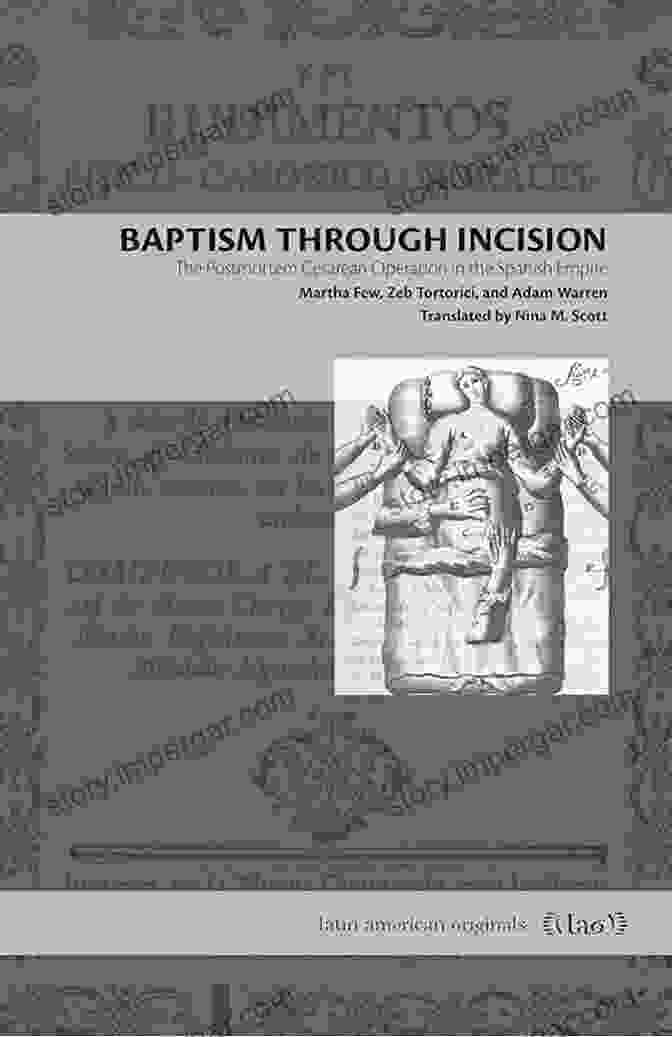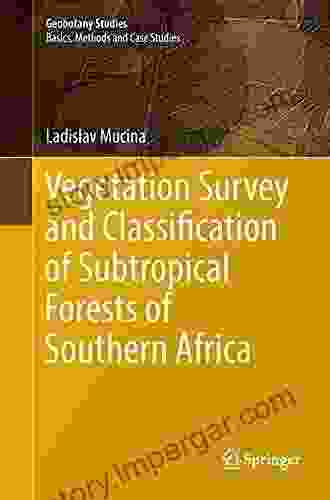Exploring the Postmortem Cesarean Operation in the Spanish Empire's Latin America: A Comprehensive Guide


The postmortem cesarean operation, a procedure performed after the death of the mother to deliver her child, has a rich and complex history in the Spanish Empire's Latin America. In this article, we delve deep into this fascinating historical practice, examining its origins, prevalence, motivations, and legal implications. By exploring primary sources and engaging with historical scholarship, we aim to shed light on the motivations and beliefs that shaped this practice in a particular time and place.
5 out of 5
| Language | : | English |
| File size | : | 1723 KB |
| Text-to-Speech | : | Enabled |
| Screen Reader | : | Supported |
| Enhanced typesetting | : | Enabled |
| Word Wise | : | Enabled |
| Print length | : | 151 pages |
Origins and Prevalence
The origins of the postmortem cesarean operation can be traced back to ancient Greece and Rome, where it was performed primarily to extract the fetus in cases of maternal death. However, it was not until the 16th century that the procedure became more widely practiced in Europe and its colonies, including the Spanish Empire's vast territories in Latin America.
The prevalence of the postmortem cesarean operation in Latin America varied across time and region. In some areas, it was performed relatively frequently, while in others, it was less common. Factors such as cultural beliefs, religious practices, and medical knowledge likely influenced its prevalence in different locations.
Motivations and Beliefs
The primary motivation for performing a postmortem cesarean operation was to save the life of the child. In a highly religious society such as the Spanish Empire, the baptism of an infant was considered essential for its salvation. By delivering the child after the mother's death, it was believed that the child could be baptized and thus gain eternal life.
However, there were also other motivations that drove the practice. In some cases, the operation was performed to preserve the family's honor. In a patriarchal society, it was seen as shameful to have a child born out of wedlock or to have multiple children with different fathers. By performing a postmortem cesarean operation, the family could conceal the circumstances of the birth and protect its reputation.
Legal Implications
The legal implications of the postmortem cesarean operation were complex and varied. In some jurisdictions, the procedure was considered a form of murder or infanticide. However, in other areas, it was seen as a legitimate medical intervention. The legal status of the postmortem cesarean operation was often influenced by religious beliefs and cultural norms.
In Spain, the postmortem cesarean operation was legalized in 1788 by a royal decree that Free Downloaded midwives to perform the procedure in all cases where the mother had died during pregnancy or childbirth. This decree was later extended to the Spanish Empire's colonies in Latin America.
Techniques and Complications
The techniques used to perform the postmortem cesarean operation varied widely. In some cases, the procedure was performed by skilled surgeons using sterilized instruments. However, in many other cases, it was carried out by midwives or even by family members with little or no medical training.
The lack of proper medical care often led to complications and even death. The most common complications included infection, hemorrhage, and damage to the fetus. In some cases, both the mother and the child died as a result of the procedure.
Decline and Abolition
The practice of the postmortem cesarean operation began to decline in the 19th century with the advent of modern medicine. As medical knowledge improved and surgical techniques became more advanced, the risks associated with the procedure decreased. Additionally, the growing influence of secularism led to a decline in the religious beliefs that had previously motivated the practice.
In most Latin American countries, the postmortem cesarean operation was officially abolished by the end of the 19th century. However, in some remote areas, the practice continued to be performed until the early 20th century.
The postmortem cesarean operation in the Spanish Empire's Latin America was a complex historical practice that reflected the beliefs, values, and medical knowledge of the time. While the primary motivation was to save the life of the child, other factors such as family honor and religious beliefs also played a role. The practice had significant legal implications and was often performed under dangerous conditions. With the advent of modern medicine and changing societal attitudes, the postmortem cesarean operation eventually declined and was abolished. Understanding this practice provides us with a glimpse into the social, cultural, and medical history of Latin America during the colonial period.
5 out of 5
| Language | : | English |
| File size | : | 1723 KB |
| Text-to-Speech | : | Enabled |
| Screen Reader | : | Supported |
| Enhanced typesetting | : | Enabled |
| Word Wise | : | Enabled |
| Print length | : | 151 pages |
Do you want to contribute by writing guest posts on this blog?
Please contact us and send us a resume of previous articles that you have written.
 Book
Book Novel
Novel Page
Page Chapter
Chapter Text
Text Story
Story Genre
Genre Reader
Reader Library
Library Paperback
Paperback E-book
E-book Magazine
Magazine Newspaper
Newspaper Paragraph
Paragraph Sentence
Sentence Bookmark
Bookmark Shelf
Shelf Glossary
Glossary Bibliography
Bibliography Foreword
Foreword Preface
Preface Synopsis
Synopsis Annotation
Annotation Footnote
Footnote Manuscript
Manuscript Scroll
Scroll Codex
Codex Tome
Tome Bestseller
Bestseller Classics
Classics Library card
Library card Narrative
Narrative Biography
Biography Autobiography
Autobiography Memoir
Memoir Reference
Reference Encyclopedia
Encyclopedia Mary Ellen Mcknee
Mary Ellen Mcknee Terry Baker Mulligan
Terry Baker Mulligan Misagh Parsa
Misagh Parsa Stanley Krippner
Stanley Krippner Peter Anderson
Peter Anderson Mary Brown
Mary Brown Matt Collins
Matt Collins Mark Anthony Neal
Mark Anthony Neal Marika Torbacke
Marika Torbacke Marty Straub
Marty Straub S Angus
S Angus Rashid Khalidi
Rashid Khalidi Matthew Restall
Matthew Restall Mark Weisenburger
Mark Weisenburger Martina Caruso
Martina Caruso Rachael Timmins
Rachael Timmins Matt Trimble
Matt Trimble Martin Simonson
Martin Simonson Luke Hunter
Luke Hunter Wendy Marx
Wendy Marx
Light bulbAdvertise smarter! Our strategic ad space ensures maximum exposure. Reserve your spot today!

 Kirk HayesUnlock Farm Security: The Comprehensive Guide to 2000 Crop Insurance Handbook...
Kirk HayesUnlock Farm Security: The Comprehensive Guide to 2000 Crop Insurance Handbook... David MitchellFollow ·10.9k
David MitchellFollow ·10.9k Gerald BellFollow ·9.8k
Gerald BellFollow ·9.8k Walt WhitmanFollow ·6.2k
Walt WhitmanFollow ·6.2k Shaun NelsonFollow ·8.4k
Shaun NelsonFollow ·8.4k Forrest ReedFollow ·4.8k
Forrest ReedFollow ·4.8k James GrayFollow ·10.9k
James GrayFollow ·10.9k Eliot FosterFollow ·16.7k
Eliot FosterFollow ·16.7k Octavio PazFollow ·14.3k
Octavio PazFollow ·14.3k

 Roberto Bolaño
Roberto BolañoUnveiling the Beauty and History of the Medici Iris: A...
In the realm of...

 Theodore Mitchell
Theodore MitchellImproving Gut Health in Poultry: Unlocking the Path to...
In the ever-evolving field of...

 Victor Hugo
Victor HugoPersonalized Medicine with a Nanochemistry Twist:...
The future of healthcare...

 George Martin
George MartinA Year Of Wine: Perfect Pairings Great Buys And What To...
## Year of Wine: An Epic Journey Through the...

 Tom Hayes
Tom HayesDelve into the Enigmatic World of Southern Africa's...
Embark on a captivating journey through the...
5 out of 5
| Language | : | English |
| File size | : | 1723 KB |
| Text-to-Speech | : | Enabled |
| Screen Reader | : | Supported |
| Enhanced typesetting | : | Enabled |
| Word Wise | : | Enabled |
| Print length | : | 151 pages |












